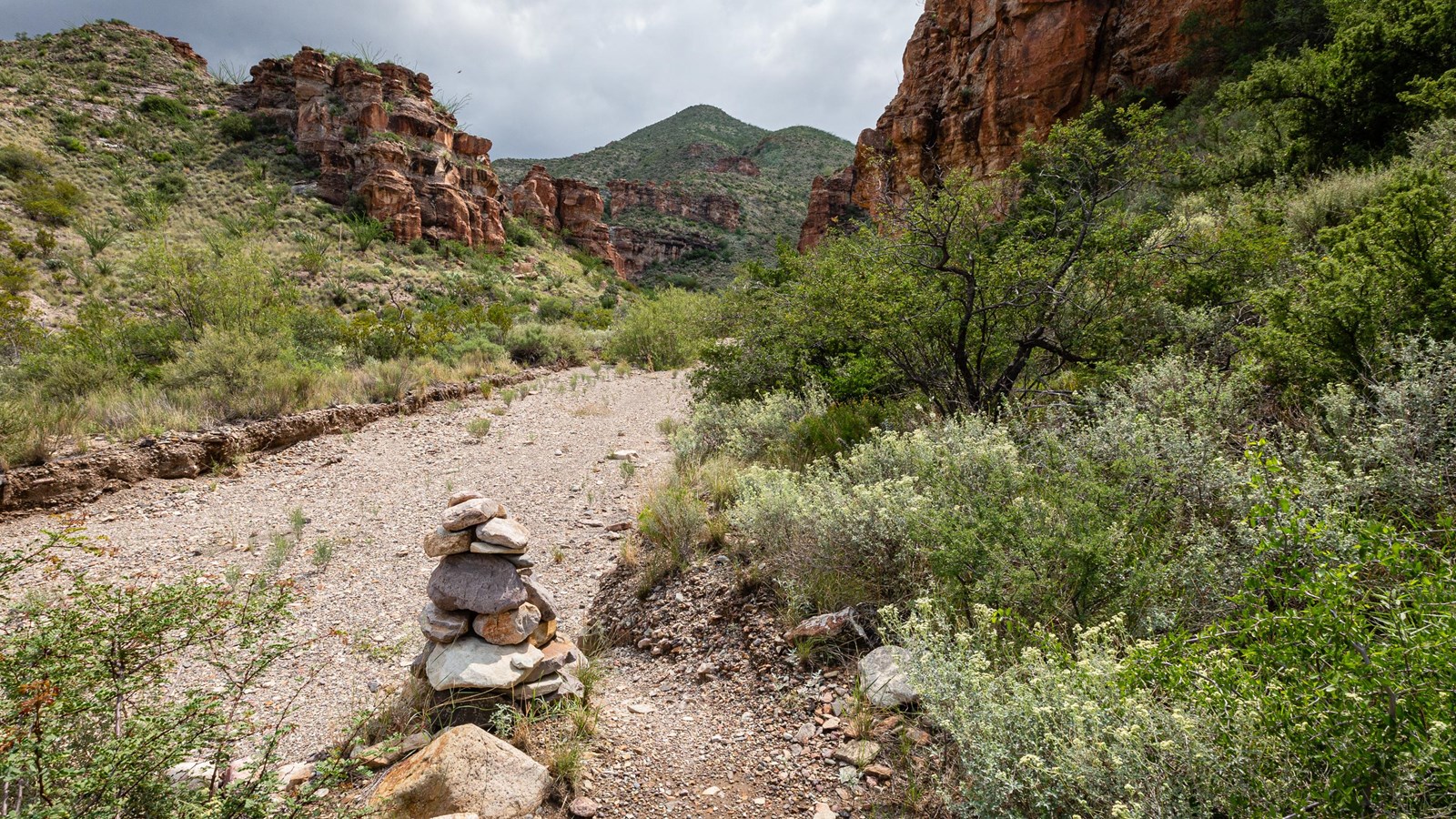Last updated: April 3, 2021
Place
Blue Creek Trail

NPS/CA Hoyt
Quick Facts
Location:
7.5 miles south on the Ross Maxwell Scenic Drive.
Amenities
1 listed
Trailhead
Trail Information
One-way Distance: 5.5 miles (8.8 km) to the Laguna Meadow TrailElevation Change: 2,693 feet (820 m)
Average Hiking Time: 3 hours
Dogs and other pets are not allowed on any trails in the park.
The 5.5 mile, one-way, Blue Creek trail starts at the Homer Wilson Ranch and climbs into the Chisos Mountains. The beginning of the trail follows the Blue Creek drainage towards the mountains. As you climb, the trail passes through open grassland and eventually the pine woodlands of the Chisos Mountains.
The Blue Creek trail ends at the junction with the Laguna Meadow Trail. From there, it's another 3.75 miles down to the parking area in the Chisos Basin, or a return of 5.5 miles.
You can hike this trail either direction—starting in the mountains and hiking down to Homer Wilson Ranch or starting at the ranch and hiking up. It's best if you have two vehicles and can leave one at either end of the trail.
For a pleasant day trip, walk up the Blue Creek drainage to the red rocks and return (about 3 miles round-trip, with 240 feet elevation gain). This short hike is particularly interesting for birders, butterfliers, wildflower enthusiasts, photographers, and geologists.
Accessibility
The lower part of the Blue Creek Trail is a sandy, rocky wash. Watch for rock cairns along the way. The trail climbs out of the wash at several points and the cairns help you locate entrance and exit points. The trail narrows and becomes steep and rocky as you ascend into the mountains.Parking for several vehicles is available at the trailhead.
Hike Smart
Bring plenty of water!Carry 1 liter of water per person per hour that you plan to hike. The importance of carrying enough water in this hot, dry climate cannot be overstated!
Eat
Your body needs food for energy and salts and electrolytes to replace what it's losing from perspiration. The dry climate at Big Bend means that sweat often evaporates almost instantly; your body is likely losing lots of moisture and salts without you even realizing it. Eat plenty of salty snacks to keep your body's salt-to-water ratio in balance.
Sun protection
Carry sunscreen and use it liberally. Hats are also strongly recommended. It may seem strange to wear long-sleeved shirts and pants in hot weather, but many hikers choose lightweight, breathable clothing which covers their arms and legs to protect themselves from the sun.
Don't leave people behind
If you're hiking in a group, make sure the person in the back always has someone to help.
Be aware of wildlife
Keep an eye out for snakes, and remember to maintain a safe distance between yourself and all wildlife. Animals in the park are wild and should never be approached, harassed, or fed.
Don't stack rocks
Cairns are stacks of rocks which are sometimes used to mark trails in areas where they are hard to follow. Randomly stacked rocks can lure hikers off the correct trail.
